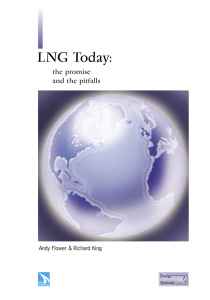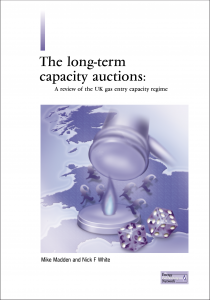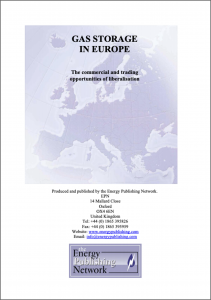MJMEnergy has written numerous reports for clients and energy industry publishers such as FT Energy, the Petroleum Economist, ESPICOM and Cedigaz, covering a variety of subjects. Where we own the copyright we have been able to make copies available to our clients free of charge as part of our capacity building work. In many cases despite their age these reports contain information on principles and processes that are just as relevant today as they were when they were written. We have now decided to make available a selection of our past reports below. Enjoy!

Commercial and operational implications for the UK gas industry
While this report is now quite old, published in 1997 it does provide a useful insight into the development and operation of the Gas Network Code used to facilitate gas-to-gas competition in Great Britain’s gas market.
- Chapter 1: The development of the competitive gas market in Great Britain since 1990.
- Chapter 2: The key points of the Network Code.
- Chapter 3: Gas transportation charging.
- Chapter 4: The impact of the Network Code on producers upstream.
- Chapter 5: The impact of the Network
Code on Shippers. - Chapter 6: Gas Storage
- Chapter 7: Supply Point administration.
- Chapter 8: The impact on end-users.
- Chapter 9: The future.
The promise and the pitfalls
While this report was originally published in 2002 it still provides an excellent overview of the global LNG industry. Areas covered include the following:

- Chapter 1: An introduction to global LNG market.
- Chapter 2: The LNG chain.
- Chapter 3: Project structures.
- Chapter 4: Sources of LNG.
- Chapter 5: LNG markets.
- Chapter 6: Marketing.
- Chapter 7: Shipping.
- Chapter 8: Short-term trading.
- Chapter 9: Outlook for LNG
A review of the UK gas entry capacity regime
This report provides a review of the development of long-term capacity auctions for the gas market in Great Britain under the Network Code. Areas covered include the following:
 Chapter 1: An introduction to the capacity regime.
Chapter 1: An introduction to the capacity regime.- Chapter 2: The types of capacity and capacity release.
- Chapter 3: Entry capacity auctions and allocation.
- Chapter 4: Constraint management.
- Chapter 5: Entry capacity revenue flows and Transco incentives.
- Appendix I: Review of the January 2003 long-term capacity auctions.
Areas covered include the following:
 Chapter 1: The
Chapter 1: The
traditional uses of storage- Chapter 2: The commercial uses of gas storage
- Chapter 3: Types of storage
- Chapter 4: Alternative to physical storage
- Chapter 5: The underlying theory of storage tariffs
- Chapter 6: Storage projects
- Chapter 7: Storage in the U.K.
- Chapter 8: Storage in the USA
- Chapter 9: An overview of storage in continental Europe
- Chapters 10 to 20 – Analysis of gas storage in Austria, Belgium, France, Germany, Italy, the Netherlands, Spain, the Czech Republic, Hungary, Poland, and Slovakia